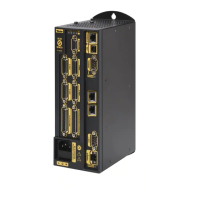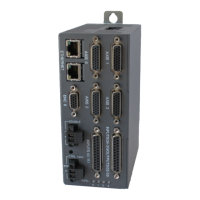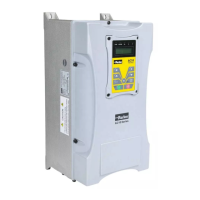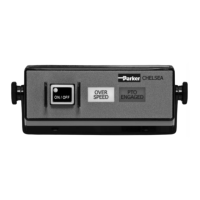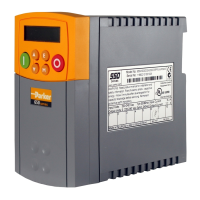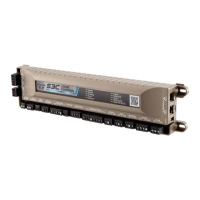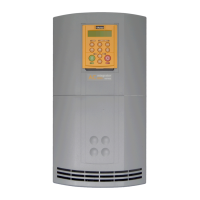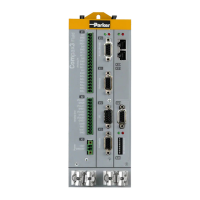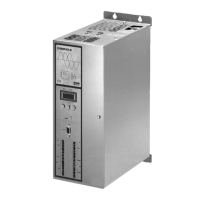Parker Hannifin
Drive I/O Functionality
The drive I/O on the ACR90x0 now monitors drive faults and encoder faults.
If these conditions exist, the drive will not be enabled. The drive I/O can be
modified, or monitored, using the drive control flags shown below.
Three new commands have been added for enabling, disabling, and
resetting drives connected to the ACR90x0 controller. These commands can
be enabled and disabled using the Enable Drive I/O bits shown on the next
page. The commands are as follows:
• DRIVE ON – This command automatically performs a REN command
before enabling the drive and delays for 50-100 ms before looking at
the drive fault input. It also checks for drive and encoder faults. This
command will also clear the kill all motion flag. If the flag is set after the
DRIVE ON command, the drive is disabled.
• DRIVE OFF – Disables the drive
• DRIVE RES – Resets drive using the drive reset input, if applicable
Here is an example of their use
P00>DRIVE ON X Y Z A
P00>DRIVE OFF X Y Z A
P00>DRIVE RES X Y Z A
Drive Input Fault
By default, the ACR9000 and ACR9030 check for a drive fault input. The
input is active when no current is flowing through the drive fault input.
If no drive fault input is attached to an axis, the user must do the following to
enable the drive: clear the Enable Drive I/O flag, then enable the drive with
the specific drive enable bit (bits 40-47). Alternatively, the polarity and
response to the Drive Fault Input may be adjusted with some Drive Control
flags described below.
Drive Control Flags
New drive control flags have been added for the ACR90x0’s dedicated drive
functionality. These parameters and bits allow users to modify the actions of
the
DRIVE command. As with other ACR controllers, SET will set the bit, and
CLR will clear the bit. See Table 10 and Table 11 in the section “External I/O
Interface Connectors“ for more information on the physical I/O structure.
118 ACR9000 Series Hardware Installation Guide
www.comoso.com

